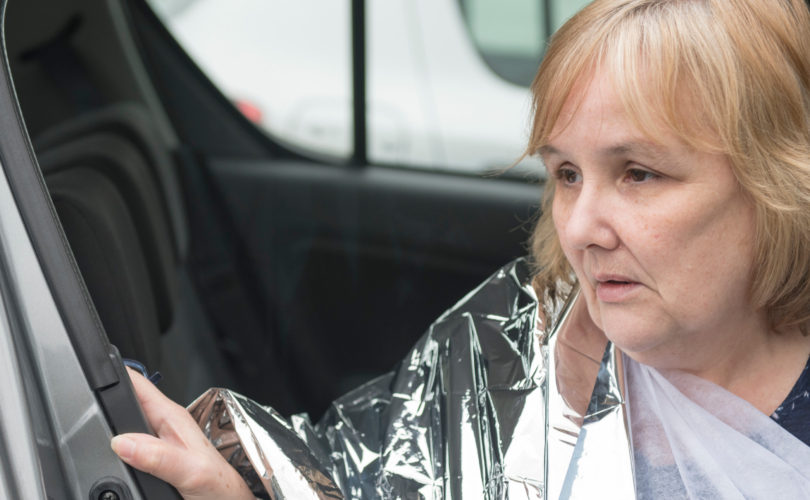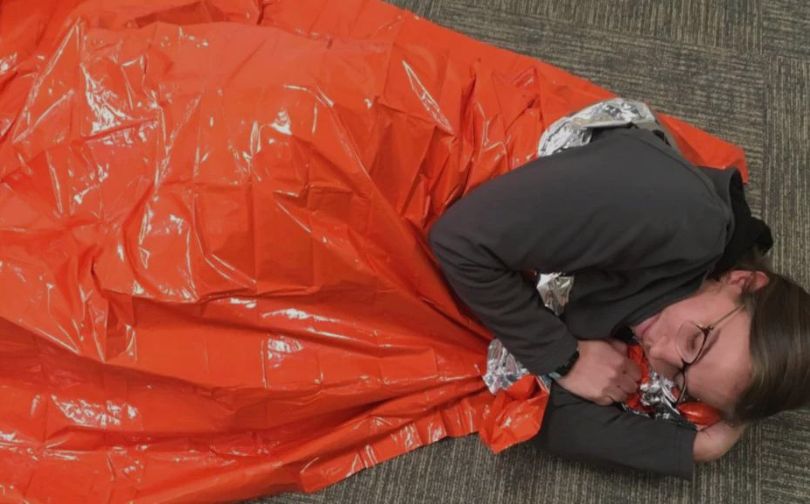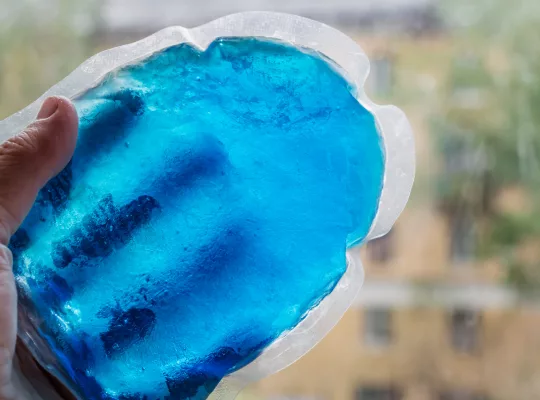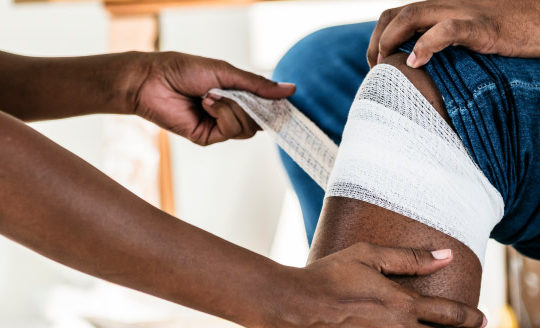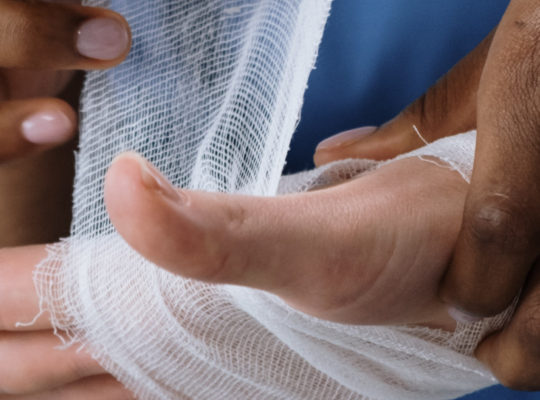In critical situations, staying warm can make the difference between life and danger. Emergency blankets, though compact and lightweight, are powerful tools for survival, yet many people aren’t sure how to use them effectively. Without proper knowledge, these blankets may fail to deliver the life-saving warmth they promise.
Did you know that an emergency blanket can retain up to 90% of your body heat? This makes it an essential item in any survival kit, especially when exposed to harsh weather conditions.
In this guide, we’ll simplify how to use an emergency blanket, whether you’re facing cold, wind, or rain. We’ll break down the key steps to ensure you’re using this crucial tool properly, helping you stay safe when it matters most.
What Is a Space Blanket?
A space blanket is a thin, lightweight sheet made from heat-reflective plastic. It is commonly used to retain body heat in emergency situations. By reflecting up to 90% of a person’s radiated body heat, it helps prevent heat loss and protects against the cold.
The material is compact and portable, making it ideal for first responders and outdoor activities. Its small size allows for easy storage in emergency kits or backpacks. While it is simple in design, it provides a highly effective way to maintain warmth in critical conditions.
Space blankets are often included in first aid supplies due to their versatility. They can be used in a range of situations, such as treating shock, hypothermia, or simply keeping someone warm in harsh weather.
What Are the Different Types of Emergency Blankets?
An emergency blanket’s role can change slightly depending on the situation and its material. In general, the blanket covers a victim to provide warmth and or a sense of security. The three most common materials are:
- Mylar – A lightweight and extremely effective heat reflector useful for any extreme weather condition.
- Tissue – These are generally used to provide privacy for either first responders who need to examine victims, or for the victims if there is a crowd around the incident area.
- Fleece – These blankets are effective at providing warmth as well as comfort to victims of an incident.
All of these blankets are lightweight and compact, making them very convenient to have alongside your normal first aid kit, and are especially useful to have in your car.
What Is Mylar and How Does It Work?
Mylar is a polyester-based plastic, which is extremely effective at trapping moisture and oxygen, which will help retain or reflect heat. Mylar is the brand name for Biaxially-oriented polyethylene terephthalate. It even insulated the space suits used for the moon landing mission, earning the name, “space blanket”. Unlike tin/aluminum foil, Mylar has two visually distinctive sides that actually have different properties (Biaxially-oriented). According to NASA one side of Mylar can reflect up to 90% of your body heat while the other side reflects around 65%.
This makes Mylar blankets, or space blankets, a common choice for mountaineers, astronauts, outdoor enthusiasts, any other person who is likely to find themselves in extreme weather conditions, or even marathon runners who will quickly lose all their heat after finishing the race. Mylar’s heat reflecting properties make it useful in extreme heat as well, turning the more reflective side towards the sun can provide shade and a slightly cooler temperature. Overall, these blankets that weigh less than a quarter of a pound are extremely useful in most emergency situations.
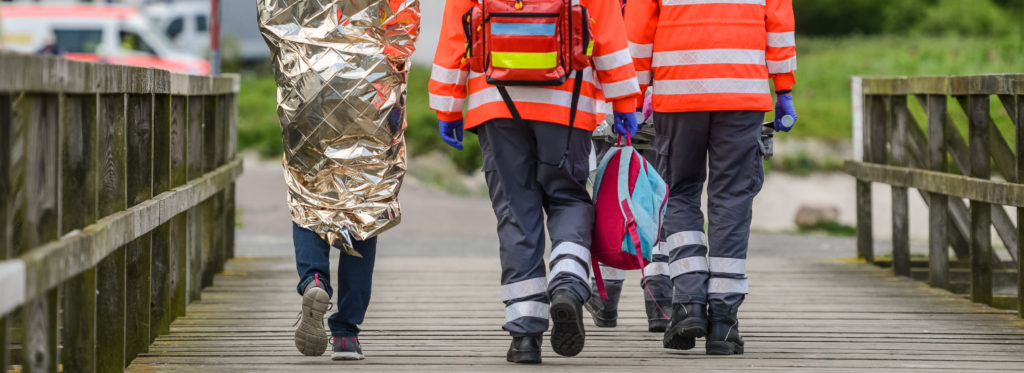
Why Should One Carry an Emergency First Responder Blanket?
Carrying an emergency first responder blanket is a practical choice for anyone preparing for unexpected situations. These blankets, often called space blankets, serve multiple functions that can make a significant difference in emergency scenarios.
One of the primary reasons to carry an emergency blanket is for weather protection. These blankets are designed to be waterproof and windproof, offering a reliable shield against rain, snow, and wind. This makes them effective in keeping you warm and dry in harsh conditions, which is crucial when exposed to the elements.
In addition to weather protection, these blankets provide versatility in their usage. They can be repurposed as makeshift shelters, reflective signals for rescue, or even as basic first aid tools. The reflective surface helps in signaling for help, and the material can be used to create slings or bandages when medical supplies are limited.
Lastly, in emergency situations where help might not arrive immediately, the blanket can preserve body heat, helping to prevent hypothermia. This feature can be lifesaving, especially when waiting for rescue in remote areas. The blanket can also be used to gather rainwater or create an SOS signal, enhancing your chances of survival in critical moments.
What Are Some Useful First Responder Blanket Features?
- Lightweight and can be easily compacted so they won’t force you to leave any of your gear behind.
- Windproof
- Waterproof
- Durable
What Can I Use an Emergency Blanket for?
In survival situations, or even just on a regular camping trip, an emergency blanket can be the ultimate multipurpose tool.
You can cut it into smaller strips, pieces, swatches, etc. for many different options, such as: lining clothes for extra insulation or waterproofing, a makeshift bandage or rope to secure a splint, tent or other items, or you could even use the shiny material to lure and catch fish.
Mylar’s reflective property is easily its most valuable. Here are some other ways to utilize the space material:
- Signaling – The shiny material can easily be used to grab someone’s attention
- Cooking – There are a few different ways to cook with Mylar. You can use it as the reflective base for a solar oven or a solar cookpot, you can wrap some food in the Mylar and put it near a fire to act like tinfoil.
- Water gathering – Mylar is completely waterproof and can be used to gather rainwater or snow and either contain the water or used as a funnel for a larger container. You can then use Mylar to help reflect heat and boil the water, making it safe to drink.
- Directing heat and protecting a fire – As previously mentioned Mylar is windproof, so you could create a semi-circular barrier around your fire to protect it from the wind while also reflecting the fire’s heat, keeping you extra warm.
- Creating a makeshift shelter – Whether you need to escape the rain or direct sun, Mylar is a useful material for a lean-to shelter.
Can You Sleep with an Emergency Blanket?
A Mylar blanket is not a substantial replacement for a tent or sleeping bag. If you are going on a backpacking or camping trip, bring a good quality tent and sleeping bag, don’t solely rely on your Mylar blanket. While a Mylar blanket can keep you very warm, it will not trap heat as efficiently as a sleeping bag. If it is your only option, a Mylar blanket will keep you safe until help arrives. As well, Mylar blankets are not padded and will not offer much comfort for sleeping.
Similarly, while they are wind and waterproof, a tent will always be more efficient than a blanket. Tent is able to handle changes in wind direction while also keeping you off the wet ground. If you are in a situation where you will be rescued within a reasonable amount of time, using your Mylar blanket is a good option because you can save time setting up and get warm quickly while also being able to keep watch for the rescue team.
Emergency blankets are incredibly useful and versatile tools, especially when made out of Mylar. They are the perfect addition to any med kit or survival gear. Being prepared is always a great idea and can drastically improve your chances of survival in an emergency situation.
Conclusion
An emergency first responder blanket is a critical tool in any survival kit. Its ability to retain heat, protect against harsh weather, and serve multiple functions makes it invaluable. These blankets provide essential warmth by shielding against wind and water, helping individuals stay warm in cold or rainy conditions.
Beyond warmth, the blankets are highly versatile. They can be used for signaling rescue teams or improvising basic first aid solutions. Their compact design ensures they can easily fit in a survival kit without adding weight.
When immediate help is delayed, the blanket’s ability to prevent heat loss can be life-saving. Whether used to collect rainwater, create a shelter, or as part of a rescue signal, it proves to be an essential survival tool.
FAQs
Can emergency blankets be reused?
Yes, emergency blankets can be reused, but it requires careful handling of these medical supplies to prevent damage. Repeated use may wear down the reflective coating, which reduces their ability to retain heat. Avoid tearing or puncturing the material to maintain its effectiveness over time.
Are there any limitations to using emergency blankets?
While they are effective at keeping warmth, emergency blankets are not insulated and provide little comfort or padding. For extended periods of exposure, it is advisable to combine them with sleeping bags or additional gear for better protection and comfort.
Can emergency blankets be used for first aid purposes?
Yes, they can be repurposed for basic first aid. Strips of the blanket can function as makeshift bandages, slings, or even tourniquets. Their lightweight nature makes them convenient in emergency situations where other supplies are unavailable.
Can an emergency blanket be used in a Bug Out Bag Survival Kit?
Yes, an emergency blanket is an essential item in a Bug Out Bag. It helps retain body heat, provides protection against wind and rain, and can be used as a makeshift shelter or signal for rescue
How effective are emergency blankets in extreme weather conditions?
Emergency blankets are excellent at retaining body heat and shielding against wind and rain. However, they might not be enough in extremely cold conditions without added insulation, especially for prolonged exposure.
Citations
https://www.offgridweb.com/survival/10-uses-for-emergency-blankets/
https://www.advnture.com/features/emergency-blanket
https://spinoff.nasa.gov/Spinoff2006/ch_9.html
https://blog.grahammedical.com/blog/blog-understanding-applications-for-different-medical-blankets

